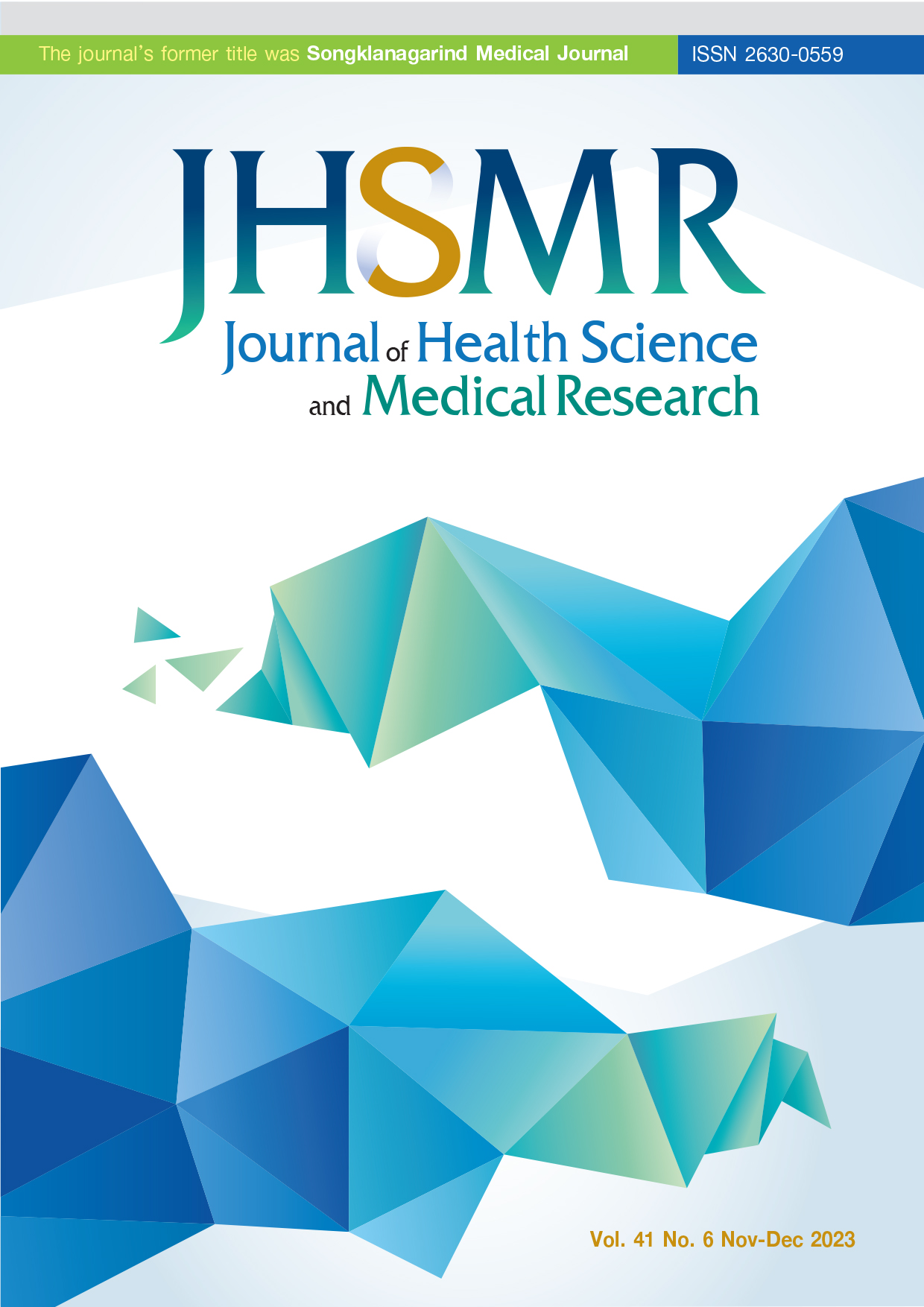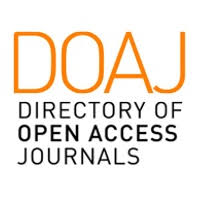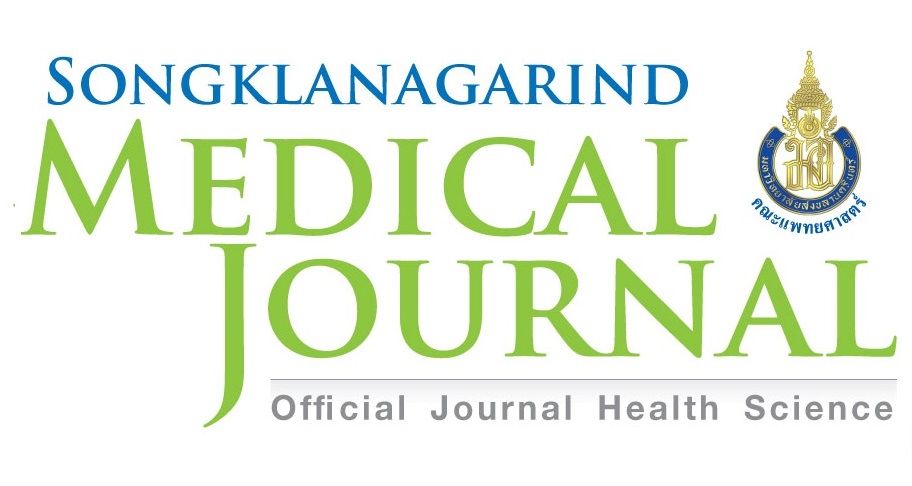A Review of Genes Associated with Obesity Susceptibility: Findings from Association Studies
DOI:
https://doi.org/10.31584/jhsmr.2023959Keywords:
genetics, predictive markers, obesity, polymorphismAbstract
Obesity is described as the accumulation of excess body fat. Several health issues are caused by excess fat, including cancer, type 2 diabetes, and cardiovascular disease. Additionally, obesity rates among schoolchildren and young adults are rising globally, putting young people at risk of chronic diseases. Genetics, epigenetic modification, epigenomics, and environmental factors influence inheritance patterns significantly. This systematic study aimed to classify and investigate the polymorphisms of novel candidate obesity genes. Several genes have been suggested, includingat mass and obesity-associated gene (FTO), leptin gene (LEP), leptin receptor gene (LEPR), peroxisome proliferatoractivated receptor gamma gene (PPARG), melanocortin 4 receptor (MC4R), insulin-induced gene 2 (INSIG2), proprotein convertase subtilisin/kexin type 1 (PCSK1), adrenoceptor beta 2 (ADRB2), and uncoupling protein 2 (UCP2). The study’s literature review identified genes in scientific papers published in databases such as Web of Science, PubMed, Google Scholar, Embase, and others over the past three decades. There is evidence that genetic variations contribute to childhood obesity, adolescent obesity, and young adult obesity. Identifying functional differences and further defining the implicated molecularly and physiologically involved genes andpathways in efficient therapeutic approaches in fighting. Technological advances have recently demonstrated that genetic changes and mutations can be used as biological markers, risk indicators, and therapeutic targets.
References
Sengupta J, Das H, Sasithra S, Britto J. An observational study of incidence of metabolic syndrome among patients with controlled Grave’s disease. Clin Epidemiol Glob Health 2022;15:101010.
Flegal KM, Graubard BI, Williamson DF, Gail MH. Causespecific excess deaths associated with underweight, overweight, and obesity. JAMA 2007;298:2028-37.
Chellaiyan VG, Kamble BD, Raja TK, Liaquathali F, Saha R, Singh SK et al. A study of determinants of obesity-is skipping breakfast meal a risk factor? J Evol Med Dental Sci 2021;10:1883-9.
Obesity: preventing and managing the global epidemic. Report of a WHO consultation. World Health Organization Tech Rep Ser 2000;894:1-253.
Ogden CL, Yanovski SZ, Carroll MD, Flegal KM. The epidemiology of obesity. Gastroenterology 2007;132:2087-102.
Loktionov A. Common gene polymorphisms and nutrition: emerging links with pathogenesis of multifactorial chronic diseases. J Nutri Biochem 2003;14:426-51.
Pérusse L, Rankinen T, Zuberi A, Chagnon YC, Weisnagel SJ, Argyropoulos G, et al. The human obesity gene map: the 2004 update. Obesity Res 2005;13:381-490.
Coll AP, Farooqi IS, Challis BG, Yeo GS, O’Rahilly S. Proopiomelanocortin and energy balance: insights from human and murine genetics. J Clin Endocrinol Metab 2004;89:2557-62.
Shapira NA, Lessig MC, He AG, James GA, Driscoll DJ, Liu Y. Satiety dysfunction in Prader-Willi syndrome demonstrated by fMRI. J Neurol Neurosurg Psychiatry 2005;76:260-2.
Jia G, Fu YE, Zhao XU, Dai Q, Zheng G, Yang Y, et al. N6- methyladenosine in nuclear RNA is a major substrate of the obesity-associated FTO. Nat Chem Bio 201;7:885-7.
Dina C, Meyre D, Gallina S, Durand E, Körner A, Jacobson P, et al. Variation in FTO contributes to childhood obesity and severe adult obesity. Nat Gene 2007;39:724-6.
Frayling TM, Timpson NJ, Weedon MN, Zeggini E, Freathy RM, Lindgren CM, et al. A common variant in the FTO gene is associated with body mass index and predisposes to childhood and adult obesity. Science 2007;316:889-94.
Karra E, O’Daly OG, Choudhury AI, Yousseif A, Millership S, Neary MT, et al. A link between FTO, ghrelin, and impaired brain food-cue responsivity. J Clin Inves 2013;123:3539-51.
Eissing L. Metabolism: FTO-associated obesity risk is linked to brain food responses via modulation of ghrelin levels. Nat Rev Endo 2013;9:564. doi: 10.1038/nrendo.2013.155.
Cusi K. The role of adipose tissue and lipotoxicity in the pathogenesis of type 2 diabetes. Cur Diab Rep 2010;10:306-15.
Zhao X, Yang Y, Sun BF, Shi Y, Yang X, Xiao W, et al. FTOdependent demethylation of N6-methyladenosine regulates mRNA splicing and is required for adipogenesis. Cell Res 2014; 24:1403-19.
Isse N, Ogawa Y, Tamura N, Masuzaki H, Mori K, Okazaki T, et al. Structural organization and chromosomal assignment of the human obese gene. J Bio Chem 1995;270:27728-33.
Mammes O, Betoulle D, Aubert R, Giraud V, Tuzet S, Petiet A, et al. Novel polymorphisms in the 5’region of the LEP gene: association with leptin levels and response to low-calorie diet in human obesity. Diabetes 1998;47:487-90.
He Y, Chen H, Quon MJ, Reitman M. The mouse obese gene: Genomic organization, promoter activity, and activation by ccaat/enhancer-binding protein α. J Bio Chem 1995;270:28887-91.
Lönnqvist F, Arner P, Nordfors L, Schalling M. Overexpression of the obese (ob) gene in adipose tissue of human obese subjects. Nat Med 1995;1:950-3.
Miller SG, De Vos P, Guerre-Millo M, Wong K, Hermann T, Staels B, et al. The adipocyte specific transcription factor C/EBPalpha modulates human ob gene expression. Proceed Nat Aca Sci 1996;93:5507-11.
Oksanen L, Kainulainen K, Heiman M, Mustajoki P, Kauppinen-Mäkelin R, Kontula K. Novel polymorphism of the human ob gene promoter in lean and morbidly obese subjects. Int J Obe 1997;21:489-94.
Lucantoni R, Ponti E, Berselli ME, Savia G, Minocci A, Calò G, et al. The A19G polymorphism in the 5′ untranslated region of the human obese gene does not affect leptin levels in severely obese patients. J Clin Endocrinol Metab 2000;85:3589-91.
Tartaglia LA. The leptin receptor. J Bio Chem 1997;272:6093-6.
Watowich SS, Wu H, Socolovsky M, Klingmuller U, Constantinescu SN, Lodish HF. Cytokine receptor signal transduction and the control of hematopoietic cell development. Ann Rev Cell Dev Bio 1996;12:91-128.
Schwartz MW, Seeley RJ, Campfield LA, Burn P, Baskin DG. Identification of targets of leptin action in rat hypothalamus. Clin Inves 1996;98:1101-6.
Yiannakouris N, Yannakoulia M, Melistas L, Chan JL, Klimis-Zacas D, Mantzoros CS. The Q223R polymorphism of the leptin receptor gene is significantly associated with obesity and predicts a small percentage of body weight and body composition variability. J Clin Endocrinol Metab 2001;86:4434-9.
Mars M, Van Rossum CT, De Graaf C, Hoebee B, De Groot LC, Kok FJ. Leptin responsiveness to energy restriction: genetic variation in the leptin receptor gene. Obes Res 2004;12:442-4.
Greene ME, Blumberg B, McBride OW, Yi HF, Kronquist K, Kwan K, et al. Isolation of the human peroxisome proliferator activated receptor gamma cDNA: expression in hematopoietic cells and chromosomal mapping. Gene Expr 1995;4:281-99.
Mukherjee R, Jow L, Croston GE, Paterniti JR. Identification, characterization, and tissue distribution of human peroxisome proliferator-activated receptor (PPAR) isoforms PPARγ2 versus PPARγ1 and activation with retinoid X receptor agonists and antagonists. J Bio Chem 1997;272:8071-6.
Dedoussis GV, Vidra N, Butler J, Papoutsakis C, Yannakoulia M, Hirschhorn JN, et al. Peroxisome proliferator-activated receptor-γ (PPARγ) Pro12Ala polymorphism and risk for pediatric obesity. Clin Chem Lab Med 2009;47:1047-50.
Ristow M, Müller-Wieland D, Pfeiffer A, Krone W, Kahn CR. Obesity associated with a mutation in a genetic regulator of adipocyte differentiation. New Eng J Med 1998;339:953-9.
Barroso I, Gurnell M, Crowley VE, Agostini M, Schwabe JW, Soos MA, et al. Dominant negative mutations in human PPARγ associated with severe insulin resistance, diabetes mellitus and hypertension. Nature 1999;402:880-3.
Yen CJ, Beamer BA, Negri C, Silver K, Brown KA, Yarnall DP, et al. Molecular scanning of the human peroxisome proliferator activated receptor γ (hPPARγ) gene in diabetic Caucasians: identification of a Pro12Ala PPARγ2 missense mutation. Biochem. Biophys Res Comm 1997;241:270-4.
Yamauchi T, Waki H, Kamon J, Murakami K, Motojima K, Komeda K, et al. Inhibition of RXR and PPARγ ameliorates diet-induced obesity and type 2 diabetes. J Clin Invest 2001;108:1001-13.
Kolehmainen M, Uusitupa MI, Alhava E, Laakso M, Vidal H. Effect of the Pro12Ala polymorphism in the peroxisome proliferator-activated receptor (PPAR) γ2 gene on the expression of PPARγ target genes in adipose tissue of massively obese subjects. J Clin Endocrinol Metab 2003;88:1717-22.
Oswal A, Yeo GS. The leptin melanocortin pathway and the control of body weight: lessons from human and murine genetics. Obesity Rev 2007;8:293-306.
Vaisse C, Clement K, Durand E, Hercberg S, Guy-Grand B, Froguel P. Melanocortin-4 receptor mutations are a frequent and heterogeneous cause of morbid obesity. J Clin Inves 2000;106:253-62.
Reinehr T, Widhalm K. l’Allemand D, Wiegand S, Wabitsch M, Holl RW. Two-year follow-up in 21,784 overweight children and adolescents with lifestyle intervention. Obesity 2009;17:1196-9.
Petry CJ, López-Bermejo A, Díaz M, Sebastiani G, Ong KK, De Zegher F, et al. Association between a common variant near MC4R and change in body mass index develops by two weeks of age. Hor Res Paed 2010;73:275-80.
Loos RJ, Lindgren CM, Li S, Wheeler E, Zhao JH, Prokopenko I, et al. Common variants near MC4R are associated with fat mass, weight and risk of obesity. Nat Gene 2008;40:768-75.
Tao YX. The melanocortin-4 receptor: physiology, pharmacology, and pathophysiology. Endo Rev 2010;31:506-43.
Zhang Y, Proenca R, Maffei M, Barone M, Leopold L, Friedman JM. Positional cloning of the mouse obese gene and its human homologue. Nature 1994;372:425-32.
Gong Y, Lee JN, Brown MS, Goldstein JL, Ye J. Juxtamembranous aspartic acid in Insig-1 and Insig-2 is required for cholesterol homeostasis. Proceed. Nat Acad Sci 2006;103:6154-9.
Herbert A, Gerry NP, McQueen MB, Heid IM, Pfeufer A, Illig T, Wichmann HE, Meitinger T, Hunter D, Hu FB, Colditz G. Response to comments on "A common genetic variant is associated with adult and childhood obesity". Science 2007;315:187.
Dina C, Meyre D, Samson C, Tichet J, Marre M, Jouret B, Charles MA, Balkau B, Froguel P. Comment on "A common genetic variant is associated with adult and childhood obesity". Science 2007;315:187.
Saar K, Geller F, Ruschendorf F, Reis A, Friedel S, Schäuble N, et al. Genome scan for childhood and adolescent obesity in German families. Pediatrics 2003;111:321-7.
Rankinen T, Zuberi A, Chagnon YC, Weisnagel SJ, Argyropoulos G, Walts B, Pérusse L, Bouchard C. The human obesity gene map: the 2005 update. Obesity 2006;14:529-644.
Vasseur F. The genetics of adiponectin. International Congress Series 2003;1253:37-44.
Scherer PE, Williams S, Fogliano M, Baldini G, Lodish HF. A novel serum protein similar to C1q, produced exclusively in adipocytes. J Bio Chem 1995;270:26746-9.
Tomas E, Tsao TS, Saha AK, Murrey HE, Zhang CC, Itani SI, et al. Enhanced muscle fat oxidation and glucose transport by ACRP30 globular domain: Acetyl–CoA carboxylase inhibition and AMP-activated protein kinase activation. Nat Acad Sci 2002;99:16309-13.
Arita Y, Kihara S, Ouchi N, Takahashi M, Maeda K, Miyagawa JI, et al. Paradoxical decrease of an adipose-specific protein, adiponectin, in obesity. Biochem Biophys Res Comm 1999;257:79-83.
Dastani Z, Hivert MF, Timpson N, Perry JR, Yuan X, Scott RA, et al. Novel loci for adiponectin levels and their influence on type 2 diabetes and metabolic traits: a multi-ethnic meta-analysis of 45,891 individuals. PLoS Gene 2012;8:e1002607.
Beckers S, Peeters AV, De Freitas F, Mertens IL, Verhulst SL, Haentjens D, Desager KN, Van Gaal LF, Van Hul W. Association study and mutation analysis of adiponectin shows association of variants in APM1 with complex obesity in women. Ann Hum Gene 2009;73:492-501.
Yang WS, Tsou PL, Lee WJ, Tseng DL, Chen CL, Peng CC, Lee KC, Chen MJ, Huang CJ, Tai TY, Chuang LM. Allelespecific differential expression of a common adiponectin gene polymorphism related to obesity. J Mole Med 2003;81:428-34.
Jackson RS, Creemers JW, Ohagi S, Raffin-Sanson ML, Sanders L, Montague CT, Hutton JC, O’Rahilly S. Obesity and impaired prohormone processing associated with mutations in the human prohormone convertase 1 gene. Nat Gene 1997;16:303-6.
Jackson RS, Creemers JW, Farooqi IS, Raffin-Sanson ML, Varro A, Dockray GJ, et al. Small-intestinal dysfunction accompanies the complex endocrinopathy of human proprotein convertase 1 deficiency. J Clin Invest 2003;112:1550-60.
Farooqi IS, Volders K, Stanhope R, Heuschkel R, White A, Lank E, et al. Hyperphagia and early-onset obesity due to a novel homozygous missense mutation in prohormone convertase 1/3. J Clin Endocrinol Metab 2007;92:3369-73.
Heni M, Haupt A, Schäfer SA, Ketterer C, Thamer C, Machicao F, et al. Association of obesity risk SNPs in PCSK1with insulin sensitivity and proinsulin conversion. BMC Med Gene 2010;11:1-8.
Benzinou M, Creemers JW, Choquet H, Lobbens S, Dina C, Durand E, et al. Common nonsynonymous variants in PCSK1 confer risk of obesity. Nat Gene 2008;40:943-5.
Meyre D, Delplanque J, Chèvre JC, Lecoeur C, Lobbens S, Gallina S, et al. Genomewide association study for earlyonset and morbid adult obesity identifies three new risk loci in European populations. Nat Gene 2009;41:157-9.
Seidah NG, Mowla SJ, Hamelin J, Mamarbachi AM, Benjannet S, Touré BB, et al. Mammalian subtilisin/kexin isozyme SKI- 1: a widely expressed proprotein convertase with a unique cleavage specificity and cellular localization. Proc Nat Acad Sci 1999;96:1321-6.
Benzinou M, Creemers JW, Choquet H, Lobbens S, Dina C, Durand E, et al. Common nonsynonymous variants in PCSK1 confer risk of obesity. Nat Gene 2008;40:943-5.
Heni M, Haupt A, Schäfer SA, Ketterer C, Thamer C, Machicao F, et al. Association of obesity risk SNPs in PCSK1with insulin sensitivity and proinsulin conversion. BMC Med Genet 2010;11:1-8.
Bray M, Hagberg J, Perusse L, Rankinen T, Roth S, Wolfarth B, et al. The human gene map for performance and healthrelated fitness phenotypes: the 2006-2007 update. Med Sci Sports Exerc 2009;41:35-73.
Martínez-Hernández A, Enriquez L, Moreno-Moreno MJ, Marti A. Genetics of obesity. Pub Health Nutr 2007;10:1138-44.
Macho-Azcarate T, Calabuig J, Martí A, Martinez JA. A maximal effort trial in obese women carrying the β2-adrenoceptor Gln27Glu polymorphism. J Physi Biochem 2002;58:103-8.
Corbalan M, Marti A, Forga L, Martinez-Gonzalez MA, Martinez JA. The 27Glu polymorphism of the beta2-adrenergic receptor gene interacts with physical activity influencing obesity risk among female subjects. Clin Gene 2002;61:305-7.
Fleury C, Neverova M, Collins S, Raimbault S, Champigny O, Levi-Meyrueis C, et al. Uncoupling protein-2: a novel gene linked to obesity and hyperinsulinemia. Nat Gene 1997;15:269-72.
Marti A, Martinez JA. Obesity studies in candidate genes. Med Clin 2004;122:542-51.
Zurbano R, Ochoa MC, Moreno-Aliaga MJ, Martinez JA, Marti A. Influence of the-866G/A polymorphism of the UCP2 gene on an obese pediatric population. Nutr Hosp 2006;21:52-6.
Christine Konner AC. Selective insulin and leptin resistance in metabolic disorders. Cell Metab 2012;16:144-52.
Marchesini G, Moscatiello S, Di Domizio S, Forlani G. Obesityassociated liver disease. J Clin Endocrinol Metab 2008;93:S74-80.
Downloads
Published
How to Cite
Issue
Section
License

This work is licensed under a Creative Commons Attribution-NonCommercial-NoDerivatives 4.0 International License.
























